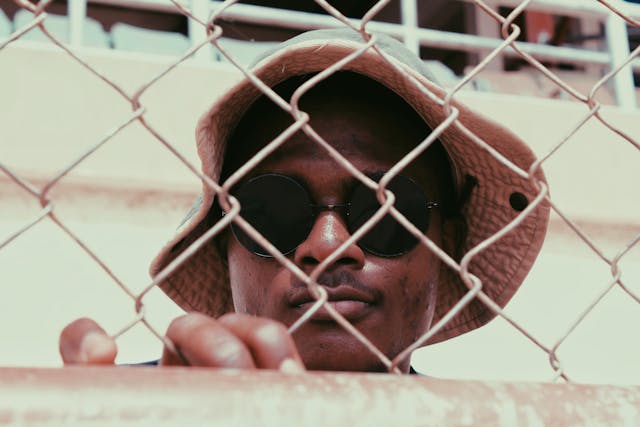What does Diggy Graves look like? Unpack the image, myth, and public intrigue around this enigmatic figure in this radical exposé.
When people search “what does Diggy Graves look like,” they’re not just trying to identify a face, they’re chasing the vibe, the mythos, the essence of a figure cloaked in low-key charisma and digital mystique.
Diggy Graves isn’t your run-of-the-mill internet personality. He’s that rare combination of underground appeal, aesthetic intentionality, and elusive digital footprint that turns curiosity into obsession. But let’s not settle for vague impressions or clickbait generalizations. This article isn’t just about face shape or hair color. It’s about decoding the energy, the look, and the cultural impact behind the visual that is, or isn’t, Diggy Graves.
What You'll Discover:
The Visual Breakdown: Face, Fashion, and Frequencies
Let’s start with the surface, but we won’t stop there. Because the look of Diggy Graves is not just a snapshot; it’s a statement.
A Face That Suggests Stories
Diggy Graves doesn’t look like someone who walked out of a commercial. His face isn’t polished by Hollywood lighting, it’s carved by intent. Think defined bone structure, maybe a shadow of stubble that feels more like an aesthetic than an afterthought. There’s a deliberate intensity in his eyes, not the wide-open Instagram sparkle, but the kind of gaze that looks through you rather than at you.
If you’ve seen him in any public appearances, his expressions remain neutral but alert, like he’s observing everything, processing everything, rarely playing into exaggerated emotions. That makes him compelling. You feel like his face is part mirror, part mask.
Hair That Speaks Subculture
His hair? That fluctuates. Sometimes it’s tousled like he rolled out of an indie rehearsal studio. Other times, it’s slicked back, giving minimalist noir energy. But it’s never overstyled. It resists the algorithms, no frosted tips, no TikTok perms. The hair says, “I’m aware of the trends. I just don’t bend to them.”
It’s not a calculated rebellion. It’s more like quiet defiance. And that subtle “I don’t need to try” energy? That’s his power aesthetic.
Style: Somewhere Between Post-Punk and Postmodern
Diggy Graves’ wardrobe is an architectural echo of his persona: dark palettes, experimental textures, and silhouettes that refuse to be defined. He mixes layers like a collage artist, a vintage trench paired with combat boots, or an oversized shirt worn like armor.
What does this suggest? A deliberate curation. You don’t get “thrift store random.” You get “intentional ambiguity.” Every item he wears is a brushstroke on his living canvas. There’s always something unfinished, something raw, something asymmetrical. It’s fashion not for attention, but for atmosphere.
The Energy Behind the Image
We live in a culture of overexposure. Faces are filtered, bodies are branded, and identities are monetized. Diggy Graves walks away from that. Which makes people lean in even closer.
Presence Over Perfection
Here’s the real twist: it’s not what Diggy Graves looks like, it’s what he feels like to look at. He’s not trying to be “hot.” He’s trying to be felt. And that’s radical.
In photos or video snippets where he appears, he often leans into negative space. The framing is loose, backgrounds minimalist, lighting dim. It’s not vanity; it’s vibe. You don’t get the full picture, and that’s the point.
He leaves room for interpretation, which means his look lives in the viewer’s imagination just as much as in pixels.
His Face as a Moodboard
Scroll through Twitter threads, Reddit fan speculation, or YouTube comment sections, and you’ll find an interesting phenomenon: people don’t describe Diggy Graves’ face. They describe what it reminds them of.
- “He looks like late-night city walks.”
- “Like a song that never got released.”
- “Like if an old photo album came alive.”
It’s wild, right? Most public figures get compared to celebrities. Diggy gets compared to feelings. That’s when you know you’re witnessing more than a look, you’re witnessing an aesthetic movement.
Public Sightings and Fan Reconstructions
Diggy Graves doesn’t flood his timeline with selfies. That leaves the internet to do what it does best: speculate, dissect, and reconstruct.
Fragmented Proof, Maximum Curiosity
He appears in low-res concert footage, podcast appearances with the camera angled just off-center, or shadowy clips posted by collaborators. That’s the thing, he lets you see him, but only on his terms.
That scarcity? It builds value. Fans will freeze frames, enhance screenshots, and piece together his appearance like a digital mood puzzle. His look is an ARG (Alternate Reality Game) for the aesthetically inclined.
Artistic Interpretations
Interestingly, some of the best representations of Diggy Graves come not from cameras, but from fan art. Artists paint him like a spectral poet, eyes hollow with meaning, clothing billowing like a dreamscape, often surrounded by metaphoric imagery (glitches, flowers, broken glass).
It tells us something crucial: Diggy Graves isn’t just looked at, he’s translated.
Cultural Influence: The Look That Launched a Thousand Edits
Diggy Graves’ appearance isn’t just a physical entity. It’s a template for a new kind of underground cool.
The “Gravescore” Movement
A niche but growing community on platforms like Tumblr and TikTok has coined the term “Gravescore”, a moodboard aesthetic inspired by how Diggy dresses, moves, and visually represents himself.
Common traits include:
- Black-and-white filters
- Heavy boots and deconstructed tailoring
- Vintage camcorder-style video edits
- Ambient audio over spoken-word poetry
In short: Diggy’s look is no longer his alone. It has transcended into an aesthetic ideology.
Influence on Independent Artists
Many up-and-coming musicians and digital creators now cite Diggy Graves as a visual influence. Not for how he sings or acts, but for how he curates his presence. He’s the opposite of a mainstream blueprint. He’s the proof that not showing can sometimes say more than oversharing.
Identity and Anonymity: The Radical Art of Being Partially Seen
In an era where facial recognition feels more intrusive than innovative, Diggy Graves turns anonymity into art.
The Half-Lit Icon
It’s easy to forget that looking a certain way online is often a product of data and design, not authenticity. Graves short-circuits that by offering fragments, a cheekbone here, a silhouette there, a reflection in a rain-blurred window. You’re never quite sure what he looks like, and that makes you watch closer.
He isn’t hiding. He’s editing the narrative.
The Resistance to Over-Definition
Diggy’s refusal to define his visual brand in a fixed way sends a quiet message: “I don’t belong to the algorithm.” In doing so, he’s giving a kind of hope to creatives who feel disillusioned with the influencer template.
He doesn’t weaponize his appearance for virality. He lets it breathe. That’s his rebellion.
Beyond the Image: What His Look Reveals About Us
Let’s flip the mirror. The obsession with what Diggy Graves looks like? It says more about us than it does about him.
Projection and Parasocial Imagination
We project identities onto images, especially fragmented ones. Diggy Graves becomes a canvas for introverts, artists, loners, seekers. When you ask what he looks like, you’re really asking: “Is there someone out there who reflects me?”
And that’s the magnetic pull, he doesn’t give you a look; he gives you permission to feel seen without being exposed.
In Praise of the Non-Curated Self
What makes Diggy stand out in the hypervisual internet landscape is not what he flaunts, but what he withholds. And maybe that’s why the search “what does Diggy Graves look like” remains so popular. We’re starving for mystery in a world drowning in exposure.
Key Takings
- Diggy Graves’ look is defined not by clarity but by curation of ambiguity.
- His face isn’t traditionally commercial, it’s emotionally resonant, often compared to moods and metaphors, not people.
- Fashion-wise, he leans into post-punk, dark-academic, and asymmetrical influences to build an aesthetic of intentional resistance.
- He allows only fragmented visual access, which increases his mystique and fuels fan interpretation.
- Diggy’s appearance has influenced a growing aesthetic subculture (Gravescore) among digital creatives.
- Rather than using his appearance for clout, he uses it as part of an ongoing artistic narrative that values atmosphere over attention.
- Our collective curiosity about his look reveals a deeper cultural hunger for ambiguity, mood-driven identity, and alternative forms of authenticity.





